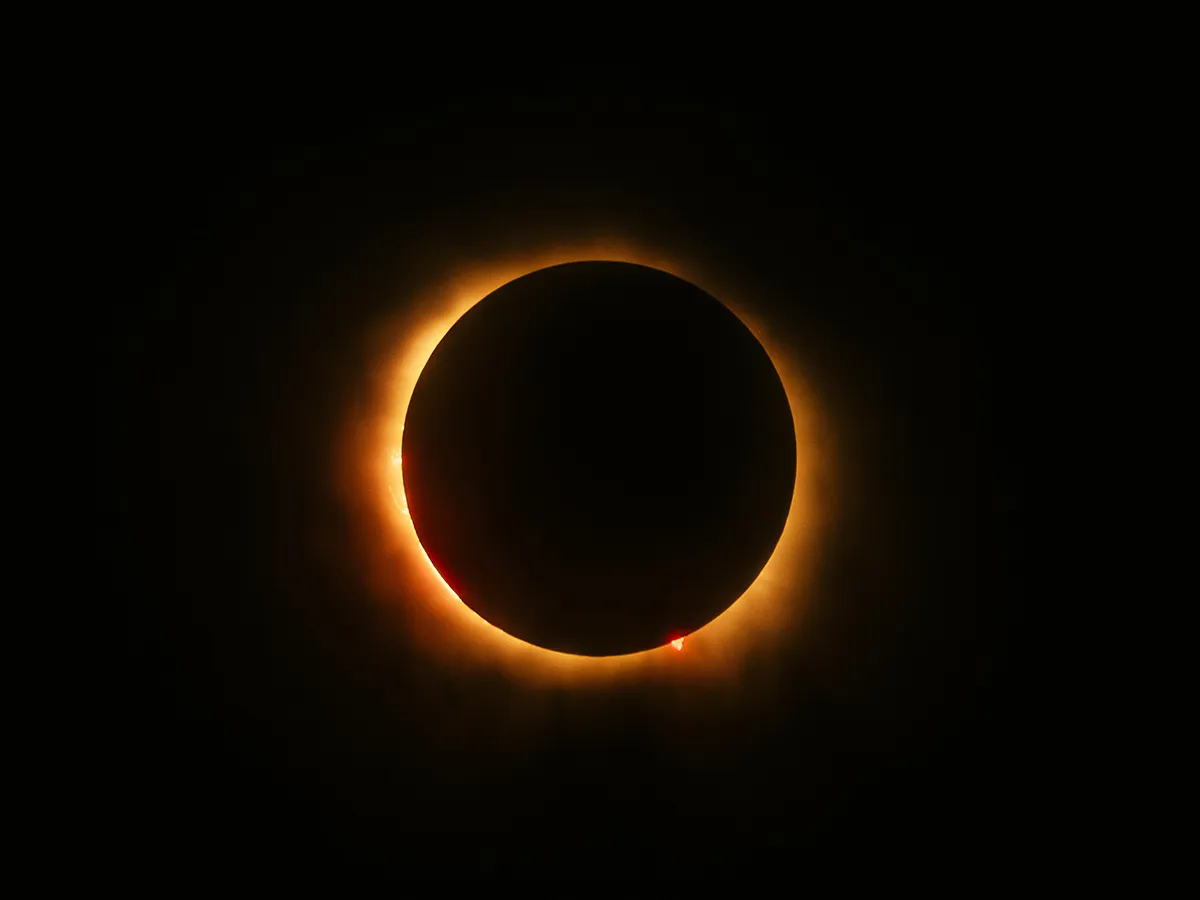On August 2, 2027, a total solar eclipse will be visible across parts of Europe, Africa and the Middle East.
If you've never seen a total solar eclipse before and are located in this part of the world, this will be your chance to watch the Moon cover the Sun, providing a period of daytime darkness and serene celestial beauty.
But if you've come to this article because you heard there was a total solar eclipse occurring on August 2, 2025, then you'll have a bit of a wait!
There's been a lot of talk about an upcoming total solar eclipse in August 2025, but this is unfortunately an example of online hype, and the solar eclipse in question will occur in 2027.
In this guide, we’ll explain what causes a solar eclipse, where and when you can see this one and how to watch safely.

Solar eclipses explained
A solar eclipse occurs when the Moon passes between the Earth and the Sun, casting the Moon's shadow on Earth and fully or partially blocking the Sun.
There are three main types of solar eclipse:
Partial eclipse: the Moon covers only part of the Sun
Annular eclipse: the Moon is too far from Earth to block the Sun entirely, leaving a bright 'ring of fire'
Total eclipse: the Moon completely covers the Sun
The eclipse on August 2, 2027 will be a total solar eclipse for those in the 'path of totality', and this is the term for the narrow strip of Earth from which you can see the Moon totally cover the Sun.
Either side of this line, you'll see the Moon only cover part of the Sun, or not at all.

Where to see the August 2, 2027 total solar eclipse
The path of totality for the solar eclipse stretches across:
- The Strait of Gibraltar
- The very southern tip of Spain
- North Africa (including Morocco, Algeria, Tunisia and Egypt)
- Parts of the Middle East (notably southern Saudi Arabia and Yemen)
Outside this path, a partial eclipse will be visible across much of Europe, Africa and western Asia.
Key timings
Maximum totality for the August 2, 2027 solar eclipse – when the Moon covers the whole of the Sun – will last for about 6 minutes, 23 seconds.
- Partial eclipse begins: 07:30 UTC
- Total eclipse begins: 08:23 UTC
- Greatest eclipse: 10:07 UTC
- Total eclipse ends: 11:50 UTC
- Partial eclipse ends: 12:44 UTC
Exact times will vary depending on your location. Useful websites for getting accurate timings include Time and Date and NASA's Eclipse Website.
Solar eclipses are a coincidence in nature

A solar eclipse occurs because, coincidentally, the Sun is about 400 times as big as the Moon, but it's also about 400 times farther away from Earth.
This makes the Sun and the Moon appear almost exactly the same size in the sky.
So when the Sun, the Moon and the Earth align just right, the Moon snugly blocks the disc of the Sun, plunging daylight into darkness temporarily.
But the Moon's orbit around Earth isn't a perfect circle: instead it's elliptical, or egg-shaped.
That means sometimes the Moon is further from Earth than at other times.
When a solar eclipse occurs and the Moon is further away from Earth, it doesn't quite block out the whole Sun and we get an annular solar eclipse instead.

How to see a solar eclipse safely
Observing a solar eclipse means looking at the Sun, which you should never do without proper equipment.
Looking at the Sun with the naked eye could damage your eyesight.
Here are some safe ways to observe the whole of a solar eclipse:
- Well-made, certified solar eclipse glasses
- Certified solar telescopes
- Solar eclipse projection for indirect observation

